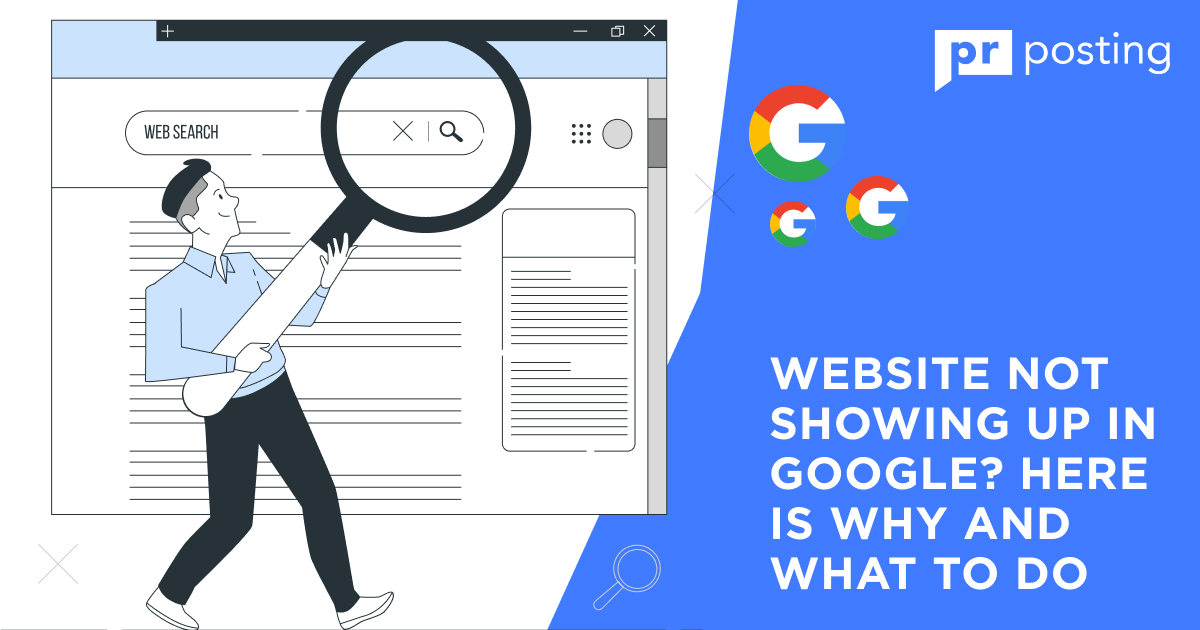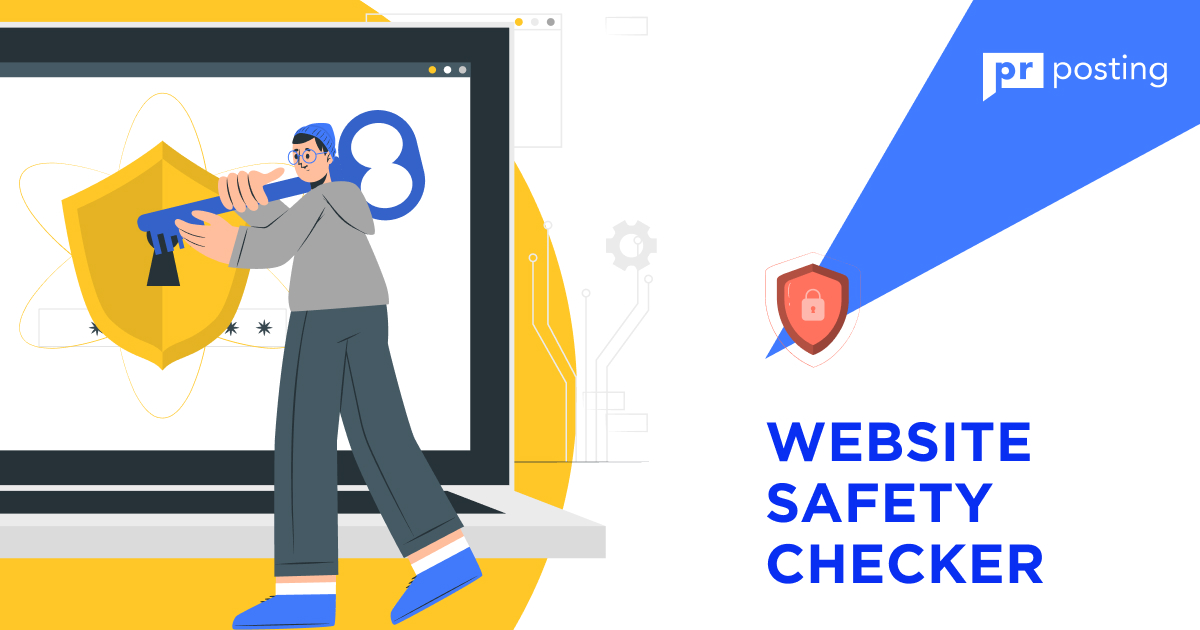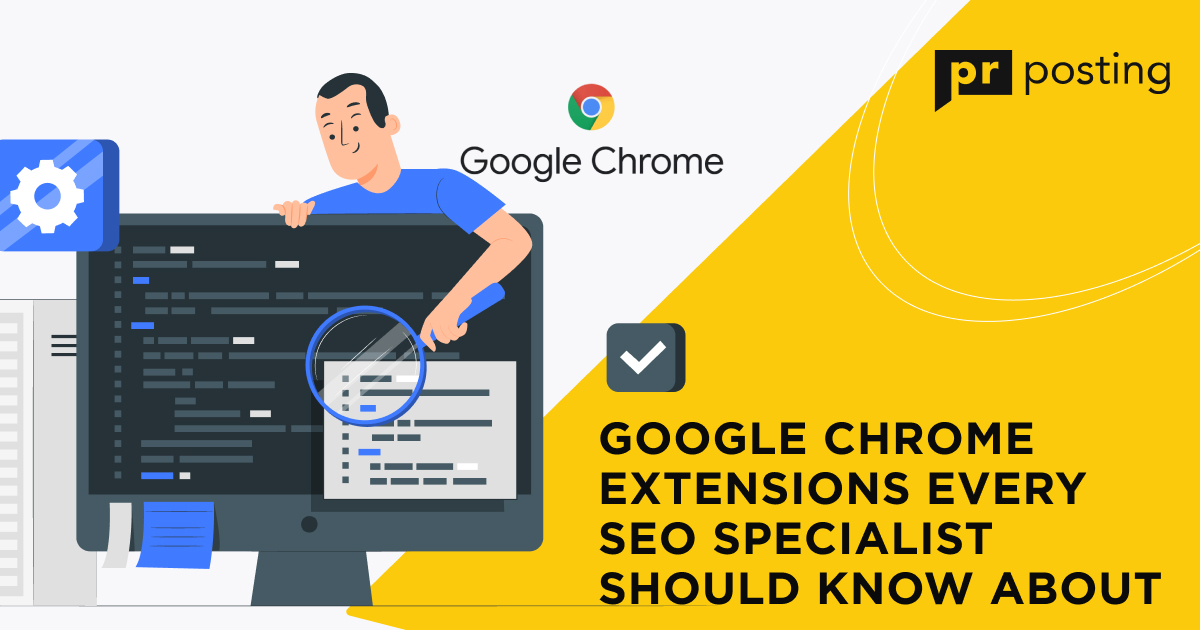Website Not Showing Up in Google? Here Is Why and What to Do

How to verify that your site or webpage is not available for Google Search
The first step is to make sure the site is not processed by search engine algorithms. This case should be distinguished from a more trivial situation of a website’s low ranking when it sticks to an umpteenth search result page visited by less than 1% of users. Admit that even you won’t be looking for your own site on the 10th page.
To make sure that the website is not showing on Google, use the simple syntax:
- For the site: «site:». For example, «site: mypage.com».
- For the page: «site: + URL». For example, «site: mypage.com/other/faq».
The search syntax allows you to limit SERP to one site or its specific section. If you see any results, the page is being processed by Google. Most likely, you don’t see it because of the low rating. If the system cannot find the site, it really is not processed by the search engine algorithms. In this situation, you should move to the next step — diagnostics.
Why isn’t my website showing up on Google Search? 11 possible reasons
Treat each case individually and pay attention to little details. Sometimes, the cause of the problem lies in a missed symbol or a forgotten checkmark in the settings menu. But there are also challenging situations with errors in the search algorithm or a too complicated site structure. We recommend using the following checklist of possible causes to simplify the diagnosis process.
1. Your website is still too new
You have entered the global network recently. Although information spreads at the speed of light there, search algorithms work much slower. That is why they are called crawlers. If a webpage is not available on Google Search, it is quite possible that the algorithm simply hasn’t got enough time to process it. Give it some time, and take advantage of the pause to focus on optimization and tuning.
2. You’re blocking search engines from indexing your pages
Does the robots.txt file ring the bell? If not, you should return to this topic and create an instruction for the search crawler. If it already exists, don’t be too lazy to open it again. Very often, the content=“noindex” tag is the answer to the ‘Why doesn’t my website show up on Google?’ question. It signals the search engine to skip the page and not index it for the search results.
Many website builders and CMSs simplifying website creation for beginners have similar solutions. For example, in WordPress, it corresponds to a checkmark opposite the “discourage search engines from indexing this site” item. This solution allows you to open access to the page to a limited group of testers while hiding it from the general public. Do not forget to disable it after creating the final version of the site.
3. You’re blocking search engines from crawling your pages
Go beyond a superficial glance at robots.txt. Carefully study all the commands outlined in it. Pay special attention to the Disallow tag. It prevents the search engine from indexing certain pages or sections of the site. This is a frequent reason why a particular URL is not on Google, even though the site is generally indexed successfully.
Disallow is not only a source of many errors but also a useful tool. It allows you to exclude highly ranked pages that don’t give the desired conversion from the search results. For example, a PR article from a blog is shown above the landing page. People will be interested in reading it, but it is unlikely to lead to many targeted actions.
4. Your website or page doesn’t have enough “authority”
Google denies using internal and external links to rank sites in the search results. The company has not published PageRank since 2017. But research by leading SEO specialists shows that a lack of links can be the answer to the ‘Why isn’t your website showing up on Google?’ question. Today, page ranking based on these parameters can be determined using third-party services, for example, Ahrefs.
5. You have duplicate content issues
Very often, a site has several versions of the same page, for example, for translation on a mobile and desktop device. In this case, the search engine chooses one of them, calling it “canonical”. Only this version is included in the indexing, and the others are skipped. The more duplicates of the same page you have, the higher the likelihood you are dealing with this exact cause.
6. Your web page doesn’t match the search intent
Google uses the latest advances in artificial intelligence. In fact, the company has created an artificial brain that has learned to think and make decisions like a human. That is why the usefulness of the results takes center stage in new versions of the algorithm. Thus, websites not showing up on Google may not correspond to the user intent or contain useful information.
For example, you promote a page for the “best pictures of cats” keyword but advertise paintings. The search engine will not include your site in the SERP because people usually use such a request to look for funny pictures and memes. Or, say, you optimize your site for “buy cars in Glasgow” while telling about wrenches in Johannesburg. Your content will be considered inappropriate in both cases.
7. Your keyword market is very competitive
It has long been observed that in the high-frequency keyword market, search engines favor established leaders while being very slow to process the pages of newcomers. Therefore, starting from optimization for the broadest requests may not give the desired result. For example, it is very difficult to promote your repair shop for the “car repair in New York” query — the indexing will take a long time, and, as a result, your site will end up in the SERP backyard.
8. You don’t have enough high-quality backlinks
The higher the number of authoritative sources that link to your site, the higher the ranking. But it should be remembered that the emphasis in this statement is on the word “authoritative”. A large number of spammy links can have the opposite effect since the search engine will recognize them as spam and an attempt to bypass the algorithms. This will result in you asking the rhetorical question — why can’t I find my website on Google? Mind that in today’s SEO, as in many other areas of life, quality comes before quantity.
9. Your website does not provide a good user experience (UX)
Another intelligent algorithm of the search engine is the assessment of the site’s usability from the user’s point of view. The machine looks for critical errors that usually discourage visitors: chaotic arrangement of text blocks, non-optimal placement of menu items, poorly selected color scheme, etc. As a rule, sites with poor UX are lowered in ranking, and the system may even exclude them from indexing in the worst cases. Unlike other causes, this one is difficult to detect with the help of services based on quantitative calculations. Conventional methods of site and application testing will be more relevant here.
10. Your website is too slow
Sometimes, the reasons behind poor rankings are purely technical. If you fail to select a good hosting provider, your website won’t show up in Google due to slow loading. As with UX, search engines downgrade websites when they are slow. If the content is loaded 10-15 seconds after clicking on a link, the page may be excluded from indexing to avoid cluttering the SERP.
11. You have a Google penalty
It happens more often than you think. The search engine automatically punishes violators who try to bypass its algorithms and gain popularity in an unfair way. This mostly happens with pages stealing other people’s content, sending a lot of spam, or showing intrusive ads that are difficult to close. But there are worse scenarios: sites that contain malicious code or have recently been hacked are excluded from indexing.
How to fix the “website not showing up on Google” issue
So, you know the page is not indexed. The situation can be critical. For example, this means everyday losses of tens if not hundreds of thousands of dollars for large online stores. Therefore, you should act based on a clearly established plan after spotting the problem. Here is a checklist in case your website is not showing in Google Search.
1. Set up Google Search Console
The importance of this tool cannot be overestimated. It points to the source of the problem in 90% of cases, making it possible to correct the situation in a matter of minutes. You can submit a manual request for indexing and share your sitemap with a search engine. And it also provides valuable statistics on the number of visitors, the promotion effectiveness, and target audience reach.
2. Submit your sitemap
It happens that the search engine indexes the main page of the site but ignores other content. The reason is the absence or incorrect construction of the map. You can create the correct version with the help of various tools and plugins for CMSs. For example, one of the most popular tools for WordPress is Yoast SEO. The finished map must be placed in the site folder. After that, all you have to do is open Google Search Console, select the Sitemap item, specify the address of the current version, and click Submit. You’re done — your request will be processed as soon as its turn comes.
3. Use the URL Inspection tool
If Google can’t find your website, it’s quite possible that you haven’t yet asked it to show the page in SERP. Open the console and select the URL Inspection tool. A search window will appear. Enter the page address in it. If it is not yet indexed, you need to submit a request manually. This will significantly speed up the process.
4. Analyze your technical SEO
For a site to get to the first page of search results, it must be perfectly optimized. Pay special attention to the following points:
- loading time
- convenience for users (UX)
- correctness of settings
- elements of the robots.txt file
- selection of keywords and links
- absence of broken pages
The process can be significantly accelerated with the help of specialized services.
5. Enrich your content with relevant keywords
The selection of keywords is a rather wide and complex topic that deserves a separate article. We will not dwell on it today but give a few tips:
- Focus on the user intent — keywords should correspond to the content and intended purpose of the page.
- Choose an optimal combination of low, medium, and high-frequency queries to stay at the top.
- Focus on the leaders of your segment, familiarize yourself with the tactics of successful competitors, and constantly update the database of your keywords.
- Use external services that allow you to rank keywords based on the query popularity and the optimization difficulty level.
- Always keep an eye on changes in search engine algorithms. Even minimal changes can quickly remove your site from the top.
6. Create internal links
If your website is not showing on Google Search, the reason may be poor navigation between its sections. You should make sure that each page has at least 1-2 links from internal resources. Otherwise, it risks becoming an island or orphan — it is very difficult for search engines to find and index such content.
7. Build high-quality links
Once again: quality is more important than quantity. If you publish content on external platforms, choose the most authoritative sites, for example, news agencies, top blogs, or popular online media. Build your reputation one step at a time, and don’t let it shatter because of embarrassing mistakes like the mass posting of spammy materials.
8. Fix the Google penalty issue
Search Console always shows which sanctions have been applied to your pages and how they were implemented — automatically or manually. Remove the violation as soon as possible if you can’t find your website on Google for this reason. Contact the technical support staff for clarification if the real reason for the blocking is not clear to you.
Summary: how to fix search engine issues
If your website does not appear in Google Search, start by checking the indexing. Sometimes, the problem is not exclusion from the search results but a sharp decrease in the rating. Your next step is diagnostics — tap into Google Search Console to determine the cause of the problem. Usually, the situation can be fixed quite quickly: you need to make changes to the robots.txt file, send a request for indexing, or upload an updated sitemap. But it happens that the reason lies in poor technical optimization, a lack of authoritative links, or a ban from Google. Such cases require finding an individual solution.
Frequently Asked Questions
Why is my website not showing up on Google?
Common reasons include:
- recently created page
- incorrect robots.txt file filling
- insufficient number of authoritative links
- poorly organized navigation
- lack of a correct site map
- content duplication
- competitive keyword market
- poor technical optimization
- blocking by Google
How long does it take for my website to show up on Google?
From 4 days to 4 weeks. The indexing speed of a new page depends on the content type and volume as well as the competition level in this segment of online business.
How do I get my site to show up on Google?
- Make sure that the site meets all the requirements of the search engine.
- Correctly fill out the robots.txt file and remove restrictions.
- Download the current site map through Search Console.
- Check the indexing in the URL Inspection tool and send a request if necessary.
More Like This

The Ultimate Guide to Google My Business






